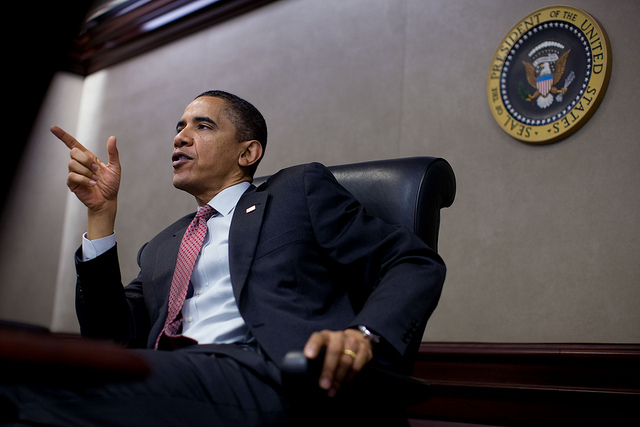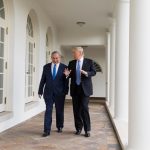by Robert E. Hunter
The stakes in President Barak Obama’s impending visit to Israel, the West Bank and Jordan have risen steadily in recent days. It is taking take place, after all, almost immediately following Secretary of State John Kerry’s trip around the region — but not to the same stops on the President’s tour — which, coming so soon after Kerry assumed office, almost inevitably can do little to advance America’s regional agenda. This agenda includes fostering regime change in Syria and ending its civil war; promoting political stability in Egypt and reinforcing its relationship with Israel; gaining Iran’s compliance on the nuclear issue; and setting the stage for a more salubrious course for the so-called Arab spring than has been seen so far, at least in the Near East. On top of that, Kerry had to deal with a complicating comment by the Turkish prime minister: “It is necessary that we must consider — just like Zionism, or anti-Semitism, or fascism — Islamophobia as a crime against humanity.” That slur did nothing to increase Israel’s confidence regarding its neighborhood.
Also inevitably, an unavoidable linkage between President Obama’s trip and the issue of the Iranian nuclear program was reinforced by the administration’s obligatory recitation of its policies before the annual meeting in Washington of AIPAC, “America’s pro-Israel lobby.” Vice President Biden was most dramatic: “President Barack Obama is not bluffing. He is not bluffing. We are not looking for war. We are looking to and ready to negotiate peacefully, but all options, including military force, are on the table.” That is nothing more than Obama has already said, in one way or another. But it comes immediately after the resumption of talks in Kazakhstan between Iran and the so-called “P5+1” countries — the permanent members of the UN Security Council and the European Union. These talks, containing at most a sliver of hope of future progress, were probably just a “time buyer” in any event — especially to get both sides past the Iranian presidential elections in June. But, now, “confidence-building,” assuming that it’s possible, will have to wait for another day.
President Obama’s trip thus does not begin on an upbeat note for America’s overall ambitions in the region. But on one level, that is almost beside the point. This is, after all, the first time he has been to Israel, more than four years into his presidency. The very fact of his going is thus important. A neat parallel was President Anwar Sadat’s almost-hectoring speech to the Israeli Knesset in 1978. At the time, I asked a leading Israeli whether Sadat’s words undercut his message of peace. “The fact that he was standing there in the Knesset,” my interlocutor said, “spoke so loudly I couldn’t hear what he was saying.”
So Obama will be there, underscoring by his presence not just that the US “has Israel’s back,” but also, made necessary by the fact of his trip, that Israel-Palestine negotiations are on his agenda. But what else?
Certainly, given the administration’s declared objective of restarting the moribund Israeli-Palestinian “peace process” — where Kerry has characterized failure as a “catastrophe” — Obama has to address the subject, and do so in more than pro forma terms. Most important is providing a sense of his own personal commitment, assuming that that is his intent, to seeing the process move forward, a highly-elastic term. One observer with about as much experience as anyone, Ambassador Dennis Ross, laid out his own 14 steps for confidence-building in last Sunday’s New York Times. While quite possibly realistic in terms of confidence-building, they are far from confidence-inspiring and are devoid of significant concrete goals, much less an end point, the so-called “final status.” Notably, Ross did not mention the so-called “Clinton Parameters,” of December 2000, which can be viewed here, and which are widely understood to be the only realistic basis for peace and the “two-state solution.”
While nothing is easy in Arab-Israeli peacemaking, the Clinton Parameters compete for the prize: land-swaps would incorporate most West Bank Jewish settlements into Israel; Jerusalem would be the capital of both Israel and a Palestinian state; Palestine would be essentially demilitarized, with Israel retaining some residual rights of defense; outside peacekeepers (probably NATO) would be introduced; and arrangements would be made for Palestinian refugees, certainly better than their current circumstances. But 12 years after these sensible ideas were put forward — and 33 years since negotiations began — success is not now even remotely in sight.
Obama’s peace mission — if that is how he sees his Near East trip — will be complicated by Israel’s deep security concerns, most immediately the civil war in Syria. Jerusalem and Damascus have had a tacit agreement since the mid-1970s to prevent a breakdown in their uneasy truce, but that is now in jeopardy. And although Egypt’s continuing commitment to its treaty with Israel, the latter’s geopolitical linchpin, will probably hold, this is not something on which Israel can bet the farm.
And then there is Iran and the nuclear conundrum. Of necessity, Obama will have to repeat, and perhaps even reinforce, what Vice President Biden said to AIPAC. He can express hopes for a peaceful outcome, but he will have to underline, and underline again, the military consequences if Iran does not respond in terms that the US, with Israel at its elbow, has set. This will not be the time or place for the US president to lay out a comprehensive strategy for dealing with Iran, including one essential element that has so far been missing: that the security needs not just of the US and Israel, but also of Iran, must all be on the table. Instead, Obama’s trip will be a time primarily to provide, and provide again, reassurances to Israel, the sine qua non for everything else.
This, of course, will do little to move forward efforts to defuse the time-bomb with Iran. But with those efforts necessarily being on hold until after its June elections, nothing should be expected from the US president, other than some reference to giving diplomacy a chance. But what of the Israeli-Palestinian peace process?
An old rule of thumb, based on both the facts and appearance of power, is that US presidents don’t do “fact-finding” or go on “listening tours.” They have mid-level officials to do that. What American presidents are expected to do by both friend (with hope) and foe (with fear), is to lead. Words will not suffice: Obama has already done that in Cairo, Ankara, and Accra with three essays in eloquence that advanced the proposition that hope buttressed by hard work can triumph over experience. Now the world waits to see his Act Two.
There is one thing to do: be bold. Not baby-steps, like those suggested by Dennis Ross — as well as by others over the years — and which have yielded so little for so long. The place to start consists of two steps that go directly to “final status.” First, to endorse in clear-cut terms the Clinton Parameters as the United States’ bottom-line, a formal commitment to a two-state solution — full stop; and second, to promise the diplomatic and other efforts needed to see them through to completion, whatever it takes. I have already argued for the appointment of Bill Clinton as Special Negotiator. Or perhaps the Secretary of State would want to do it, though that would necessarily take him away from the rest of his global duties. But the principle is clear: if the peace process between Israel and the Palestinians is ever to succeed — a huge “if” — the US president has to enunciate a concrete, simple, and unambiguous plan, set his seal to it, and be a bull terrier in carrying it through.
Be bold, Mr. President, or it would be better that you stay home.
Official White House Photo by Pete Souza





